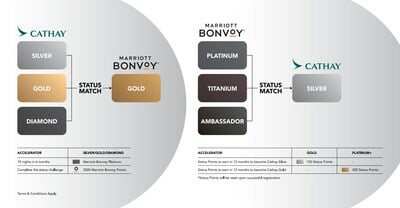With foreign direct investments (FDI) flowing well into the Middle East, particularly the United Arab Emirates, developments are mushrooming non-stop. FDI’s are expected to enter the UAE north of $100 billion in the next four years, mentioned a report by Barclays Wealth Insight. The report detailed that last year alone, most FDI injections came from the EU standing at 35 percent of total, followed by the Gulf countries at 26 percent, then Asia-Pacific (led by Japan) at 19 percent and lastly, a low 2 percent from the Americas.
The projected FDI for 2011 will represent 33 percent of the GDP for the country of Dubai, the Gulf region’s wealthiest state by far.
The investment amount is based on forecasts that international oil prices will remain above their long-term average over the next 5 years and the attendant liquidity in the region is expected to remain high.
In short, do expect the wealth to go around no other region but the Middle East until a year after the turn of the decade.
The Middle East is one of the fastest growing markets due to sustained economic growth and intra- and inbound tourism. Major hotel brands have significant development projects in the region, and the local chains such as Rotana and Jumeirah have been developing to tap into the market where occupancy rates and RevPar levels are higher than international averages. Investors benefit from a situation where supply is very tight, such as in Dubai, and operating profits are higher than in the US and Europe due to labor cost with 35 percent of departmental cost in the region, in contrast to America’s 52 percent, said PKF’s Hotel Benchmark Analysis. Very high RevPars are also driven by the high proportion of upscale hotels in the supply portfolio.
In Dubai, occupancy has been over 88 percent in the last months. The report also stated that income before fixed charges is $27,000 — 49 percent of revenues with the room department being the most profitable activity (departmental operating cost less than 20 percent of revenues and the food and beverage less profitable, running about 38 percent of revenues which is in line with international standards. Because labor costs are mainly F&B driven, this leads to a potentially high profitability ofmost mid-scale properties with no F&B offering as well as economy hotels in the Mid-East, according to the HotelBenchmark analysis.
But will the Middle East reach over-capacity and hence start the market to slow down?
Fast-developing markets always go through periods where supply goes slightly ahead of demand or demand shock takes place where demand declines for a short period. “There has been no market that hasn’t done any correction for some period in time to some degree,” said Arthur de Haast, Global CEO, Jones Lang LaSalle Hotels. “It has been very quick for the region here. The supply line is indeed booming in specific markets. In 2009 to 2010, when the market has reached its crescendo, if there has been some weakening on the consumer side, and the Americans don’t travel quite extensively, then there will be some correction.”
In the Middle East, there is no serious distress on the investment side of the market. There is some bit of difficulty due to the credit crunch in America. Generally, however there is just a lack of activity, added de Haast.
“In the financial market, there has not been the Armageddon that some have perceived yet. But the aftershocks will be considerable nonetheless and the effect cannot be determined. The phenomenon will have to brace ourselves with is the extent of inflation, and that all multinational companies in other industries are already over-capacity, which we see in the automobile industry,” said Philip Lader, chairman WPP Group and senior advisor for Morgan Stanley.
Lader added if we focus on over-capacity and inflation phenomena, then there maybe a relative stability in terms of re-pricing in a real economy which we won’t see in other sectors such as what we saw in the financial institutions. “Anytime that there has to be a re-pricing or de-leveraging, we see historically that it does not always come quickly. Therefore, it is likely that in a mid-term sense, we can have stability. But this does not suggest it will be short-term. The disruptions at least are likely, if not more than what they are,” he said.
In the GCC, the oil exports will rise by 12.5 percent next year added Barclays report saying the IMF mentioned annual oil exports from the Gulf will have reached $400 B and are forecast to go up $450 B next year. As the recession hurts the US and as North America, Europe and Asia get gripped by the credit squeeze, the economic story of the GCC continues uninterrupted. Growth in GDP for the UAE for 2008 is forecast at 8.3 percent, expected to reach 11.7 percent in Qatar, according to the Economist Intelligence Unit. Qatar has one of the world’s highest levels of per capita GDP at over $64,000 today.
On the effect on the Middle East, with the US being an election year, Sen. Obama indicated a willingness with taking more risk regarding issues such as the Middle East, said Lader. ” Whether there isn’t enough of the bases, he has to determine. It’s hard to determine really,” said Lader.
WHAT TO TAKE AWAY FROM THIS ARTICLE:
- Investors benefit from a situation where supply is very tight, such as in Dubai, and operating profits are higher than in the US and Europe due to labor cost with 35 percent of departmental cost in the region, in contrast to America's 52 percent, said PKF's Hotel Benchmark Analysis.
- Lader added if we focus on over-capacity and inflation phenomena, then there maybe a relative stability in terms of re-pricing in a real economy which we won't see in other sectors such as what we saw in the financial institutions.
- The report detailed that last year alone, most FDI injections came from the EU standing at 35 percent of total, followed by the Gulf countries at 26 percent, then Asia-Pacific (led by Japan) at 19 percent and lastly, a low 2 percent from the Americas.






















